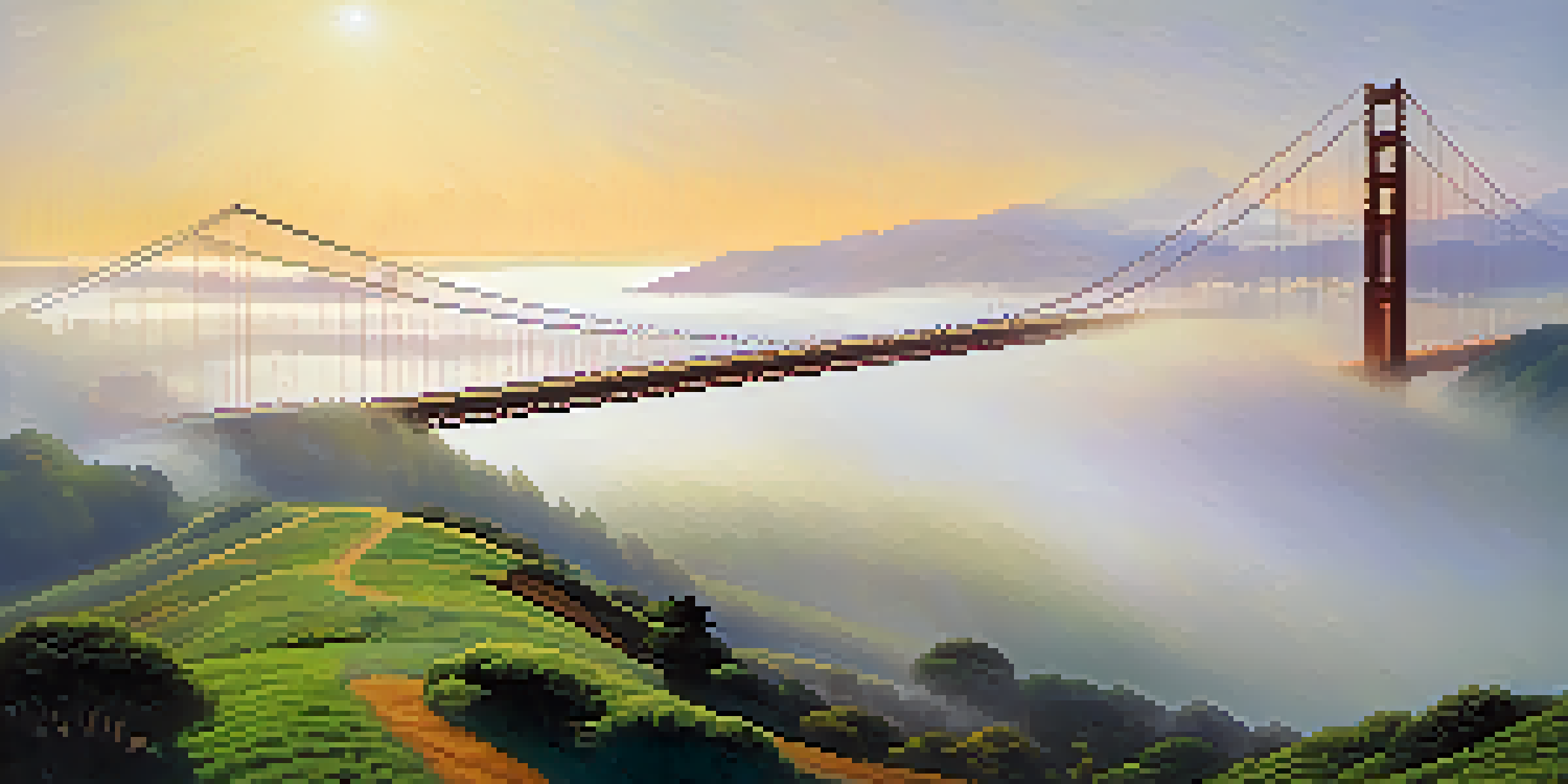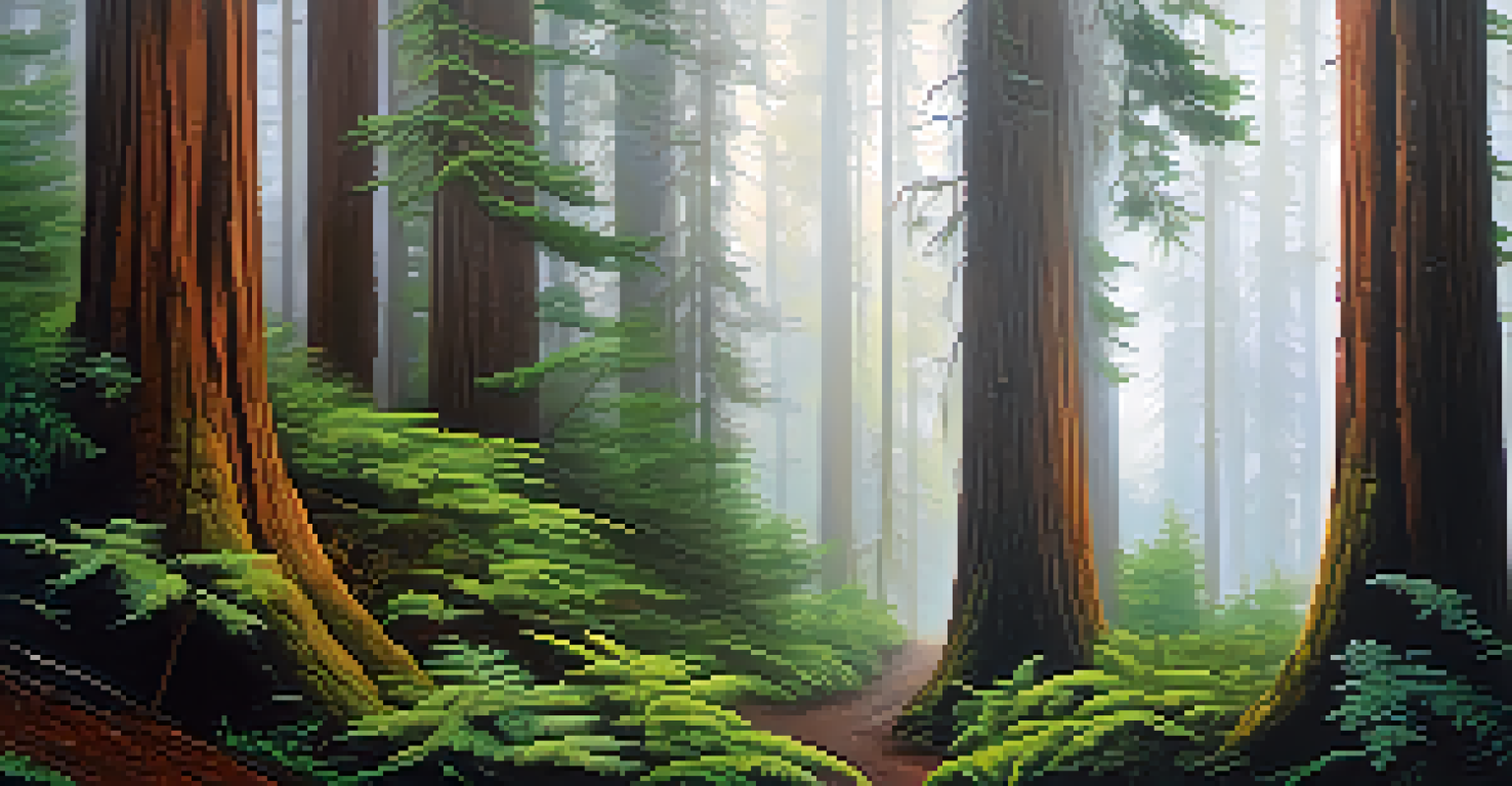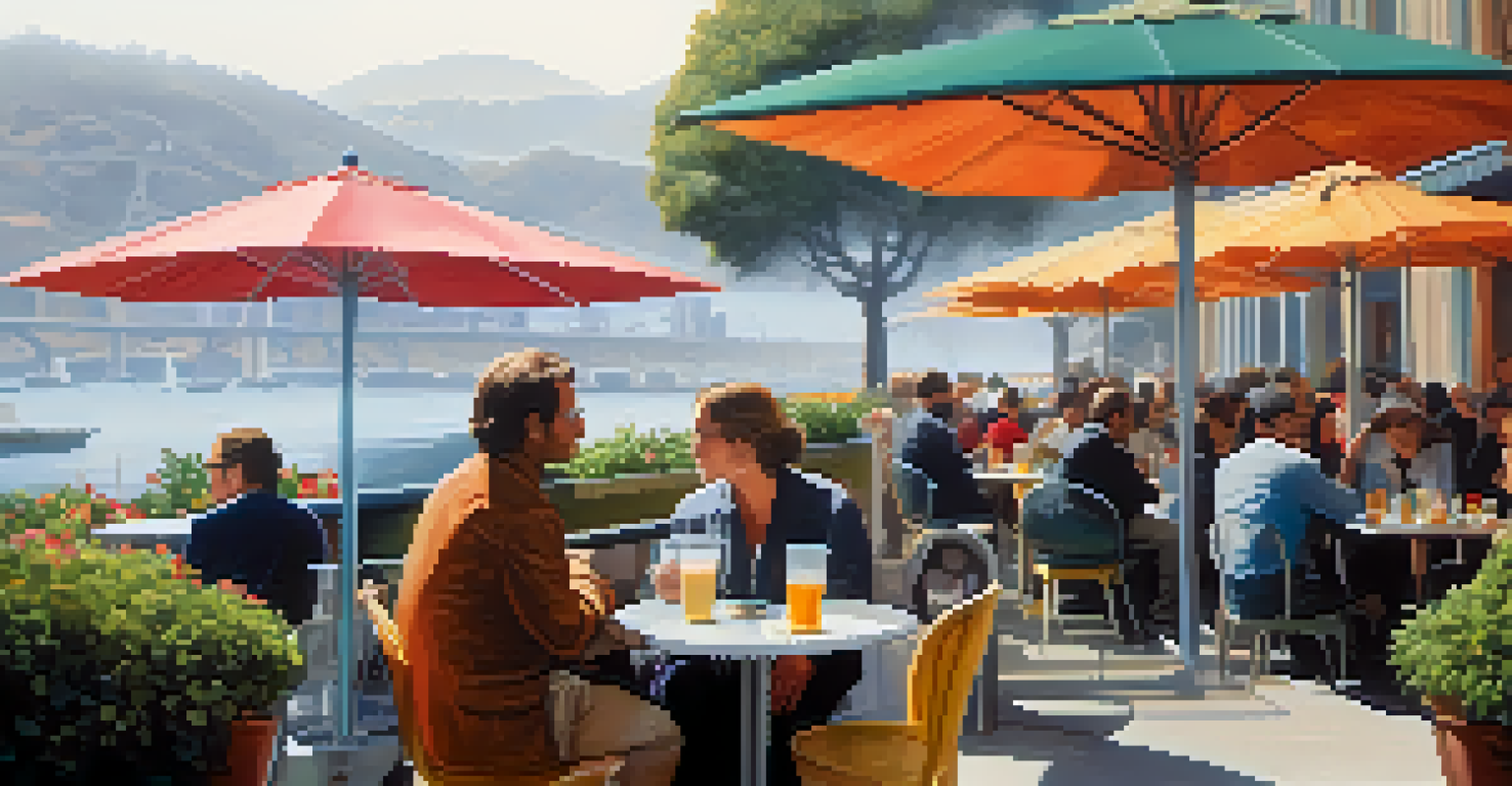The Tale of the Fog: Why San Francisco is Always Misty

Understanding San Francisco's Unique Geography
San Francisco's landscape is a fascinating mix of hills and ocean, which plays a crucial role in its foggy reputation. Nestled between the Pacific Ocean and the San Francisco Bay, the city experiences a unique microclimate. This geography creates a perfect storm of conditions for fog to thrive, especially during the summer months. Think of it as a natural amphitheater that traps moisture and cool air, setting the stage for the iconic fog.
The fog is like a friend that visits regularly, adding a layer of charm to the city.
The city's famous Golden Gate Bridge serves as a gateway, allowing cool, moist air from the ocean to sweep in, colliding with the warm air that rises from the land. This interaction creates a blanket of fog that often rolls in, especially in the late afternoon and evening. It's a phenomenon that locals have come to embrace, turning misty days into a signature aspect of the city’s charm.
In essence, San Francisco's unique geography is not just a backdrop but a central character in the tale of its fog. Each hill, each body of water, contributes to the conditions that make the city perpetually misty. It's a beautiful reminder of how nature and urban life can coexist in such a stunning way.
The Role of the Pacific Ocean in Creating Fog
The Pacific Ocean is like a giant refrigerator, providing the chill that fuels San Francisco's famous fog. During the summer, the ocean water remains cool while the inland areas heat up, creating a temperature difference. This difference causes the cool, moist air from the ocean to rush in, resulting in the fog we often see enveloping the city.

As the moist air flows over the land, it cools down further, leading to condensation and the formation of fog. This process is known as advection fog, and it’s particularly common in coastal areas. So, whenever you see fog rolling in, remember that it’s essentially the ocean sharing its coolness with the city.
Fog Shapes San Francisco's Identity
The fog is not just a weather phenomenon; it is deeply integrated into the culture and daily life of San Francisco.
In many ways, the Pacific Ocean is a key player in San Francisco's weather story. It not only shapes the city’s climate but also its culture, influencing everything from local cuisine to the way residents dress. The fog becomes a symbol of San Francisco, weaving itself into the fabric of daily life.
Seasonal Variations: When is Fog Most Common?
Fog in San Francisco is not just an all-year-round occurrence; it has its peaks and valleys throughout the seasons. Typically, summer is the prime time for fog, especially from June to August. This is when the temperature difference between the cooler ocean and the warmer inland areas is most pronounced, leading to those iconic foggy days.
Fog is a natural phenomenon that reflects the beauty of nature and the complexity of our environment.
Conversely, winter months tend to have clearer skies, as the inland areas cool down significantly, reducing the temperature contrast. This seasonal variation can surprise visitors who may expect fog year-round. It’s a reminder of how dynamic weather can be, even in a single city.
Understanding these seasonal patterns can enhance your experience in San Francisco. If you’re hoping to capture that perfect foggy photo or enjoy the mystique of the city shrouded in mist, planning your visit during the summer months is key. Embrace the fog; it’s part of what makes San Francisco so uniquely beautiful.
The Cultural Impact of San Francisco's Fog
San Francisco's fog is more than just a weather phenomenon; it's woven into the city’s culture and identity. Artists, writers, and musicians have drawn inspiration from the misty landscape, creating artworks that reflect the city’s ethereal beauty. The fog often serves as a metaphor for mystery and change, resonating deeply with the city's diverse community.
Locals affectionately refer to the fog as
Ocean Drives San Francisco's Fog
The cool Pacific Ocean creates the ideal conditions for fog formation, especially during the warm summer months.
a friend that visits regularly, adding a layer of charm to the city. It influences everything from fashion—think layers and jackets—to the way events are planned. Outdoor concerts and festivals often take the fog into account, creating unique atmospheres that are distinctly San Francisco.
Furthermore, the fog has become a beloved symbol of the city. It graces postcards, souvenirs, and social media posts, embodying the spirit of San Francisco. In a way, the fog acts as a unifying element for both residents and visitors, a shared experience that makes the city feel alive and ever-changing.
Fog and Its Effects on Local Wildlife
The fog in San Francisco is not only a visual spectacle; it also plays a vital role in the local ecosystem. Many plants and animals have adapted to thrive in this moist environment. For instance, the coastal redwoods and other native species rely on the fog for moisture, especially during the dry summer months when rainfall is scarce.
Birds, too, benefit from the fog, as it provides a cover that aids in hunting and protection from predators. Some species, like the California Quail, have evolved behaviors that take advantage of the misty conditions. It’s fascinating to see how wildlife has adapted to the unique climate that fog creates.
In a broader sense, the interplay between fog and wildlife highlights the importance of preserving natural habitats. As urban areas expand, understanding and protecting these ecosystems becomes vital. The fog’s role in sustaining local flora and fauna is a reminder of how intertwined nature and urban life truly are.
The Science Behind Fog Formation
At its core, fog formation is a fascinating scientific process. It occurs when water vapor in the air condenses into tiny droplets, creating a mist that hangs in the atmosphere. There are several types of fog, but San Francisco's signature fog is primarily advection fog, caused by the movement of warm air over the cooler ocean waters.
This scientific phenomenon is influenced by several factors, including temperature, humidity, and wind patterns. The cool ocean air meets the warm air from the land, and as they interact, the moisture condenses, forming the fog. It's a beautiful illustration of nature's balance, where different elements come together to create something magical.
Seasonal Fog Patterns in the City
Fog is most prevalent in the summer, while winter months typically bring clearer skies, highlighting San Francisco's dynamic weather.
Understanding the science behind fog not only enhances our appreciation for it but also encourages curiosity about other natural phenomena. It serves as a reminder that even the simplest sights, like fog rolling in over the Bay, can be rooted in complex scientific principles. Embracing this knowledge adds depth to our experiences in the city.
Living with Fog: Tips for San Francisco Visitors
If you're planning a trip to San Francisco, being prepared for fog is essential. Layering is key; temperatures can vary significantly throughout the day, so wearing clothes that can be added or removed helps you stay comfortable. Bringing a light jacket or sweater is a must, especially for those evening strolls along the waterfront.
Additionally, timing your activities can make your visit more enjoyable. Mornings are often the foggiest, while afternoons may offer clearer skies. Planning outdoor activities for later in the day allows you to experience the city in its full glory, with the fog as a beautiful backdrop.

Lastly, don't forget to embrace the fog! Take the opportunity to explore iconic spots like Twin Peaks or the Golden Gate Bridge when it's shrouded in mist. These moments create unforgettable memories and unique photo opportunities that showcase the enchanting spirit of San Francisco.